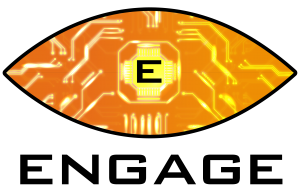If you’re someone who needs to wear glasses regularly to bring reality into focus, you might find that VR is less than accommodating. Most people do find that while wearing glasses is not impossible in VR, it is an irritation. Often the headset is either pushing the glasses back into your face, or the lenses steam up much more and more often. A solution to this problem exists. Welcome the VR lens.
The first thing we recommend that you should do is try the headset without using you glasses. Some people have been reporting that they were surprised to find they didn’t even need their glasses in VR. However, if you try this and find that things are still blurry or out of focus and no amount of IPD or lens depth adjustment seems to help, then you will need something else.
What are VR prescription lenses?
VR prescription lenses are essentially the same type of lens already in your regular glasses. There are no frames or arms needed. These lenses are individual and separate, not joined together. This allows them to be clipped in and attached to the headset easily. They sit over the top of the lenses inside the headset itself and are slightly raised up above them, meaning there’s no risk of scratching the originals.
The bonus about having the prescription lenses is that you can pop them out and give them a really good cleaning, holding them up to the light to make sure every smudge and speck is gone. It also means you don’t have to clean the headset lenses which are much more prone to damage.

Glasses vs prescription VR lenses
The biggest potential problem that wearing glasses with the headset on can cause, is scratches to the headset lenses inside. You also probably feel like your glasses are going to snap in two when you tighten the straps to the peripheral. Not to mention the extra pressure on your face caused by tightening the head strap to keep it in place. While glasses is the cheaper option (as you likely already own a pair), they aren’t very practical for VR.
If you’re sharing the headset, you’ll also have the added hassle of then having to take them off for others to use it, and storing the lenses in a safe place. Removing them is at least easy, it probably takes longer to adjust the straps to fit than to remove the lenses in our experience.
VR prescription lenses however are not adaptable between different headsets, so will have to outlay for some again when getting a different VR setup. That’s the most frustrating issue – each time you get a new headset you’ll likely have to shell out at least $60/£60 for a new pair of lenses. It can be worth it for the convenience though.
How do VR prescription lenses work
The curved side of the lens faces away from the screen and up towards your eye. This is specially designed so that the lenses don’t get scratched by the screen, and vice-versa, which is more of a risk when using a normal pair of glasses. You just need to twist the adaptors to secure them into place.
The reason this is useful for VR headsets is that they are manufactured in such a way that it minimises distortion. The slight curve of the screen inside the headset can cause the image to look and feel ‘off’, when paired with your prescription. The design of the lens inserts correct this for a better VR experience and improved FOV (field of vision). Allowing lens adjustment improves the FOV as the adapters can sometimes be quite thick.
Are prescription VR lenses worth it?
If you’re getting frustrated with discomfort in your VR headset caused by wearing glasses, then absolutely. Glasses inevitably steam up, and with the extra pressure on your head caused by the arms being squashed by the headset making simply wearing the headset uncomfortable, then these lenses are definitely worth the upgrade. Yes its an added cost, but over the lifetime of the headset you’ll be grateful of your investment.
On the positive side, you don’t need varifocals for VR. The focal length is set at between 1.5 and 2 metres, depending on the headset, so you’ll only need a distance prescription lens which is much cheaper.
You can also get VR lenses with blue light protection. This coating on the lens will help reduce the amount of blue light that comes through, which may help reduce eye strain. Some users did say that it actually reduced the quality of their experience in the headset as it didn’t look as natural. However, if you’re worried about blue light then this is could be a worthwhile addition to the lenses, as the extra cost is minimal.
When you order your lenses, it is recommended that you set the IPD level to 67mm, so that the optical center will be aligned with the headset.
Where to buy prescription VR lenses
| Website | US | UK | Worldwide |
| vroptician.com | Yes | Yes | Yes |
| framesdirect.com | Yes | Yes | Yes |
| vr-lens-lab.com | Yes | Yes | Yes |
| widmovr.com | Yes | Yes | Yes |
| vr-wave.store | Yes | Yes | Yes |
| adlens.com | No | Yes | No |
